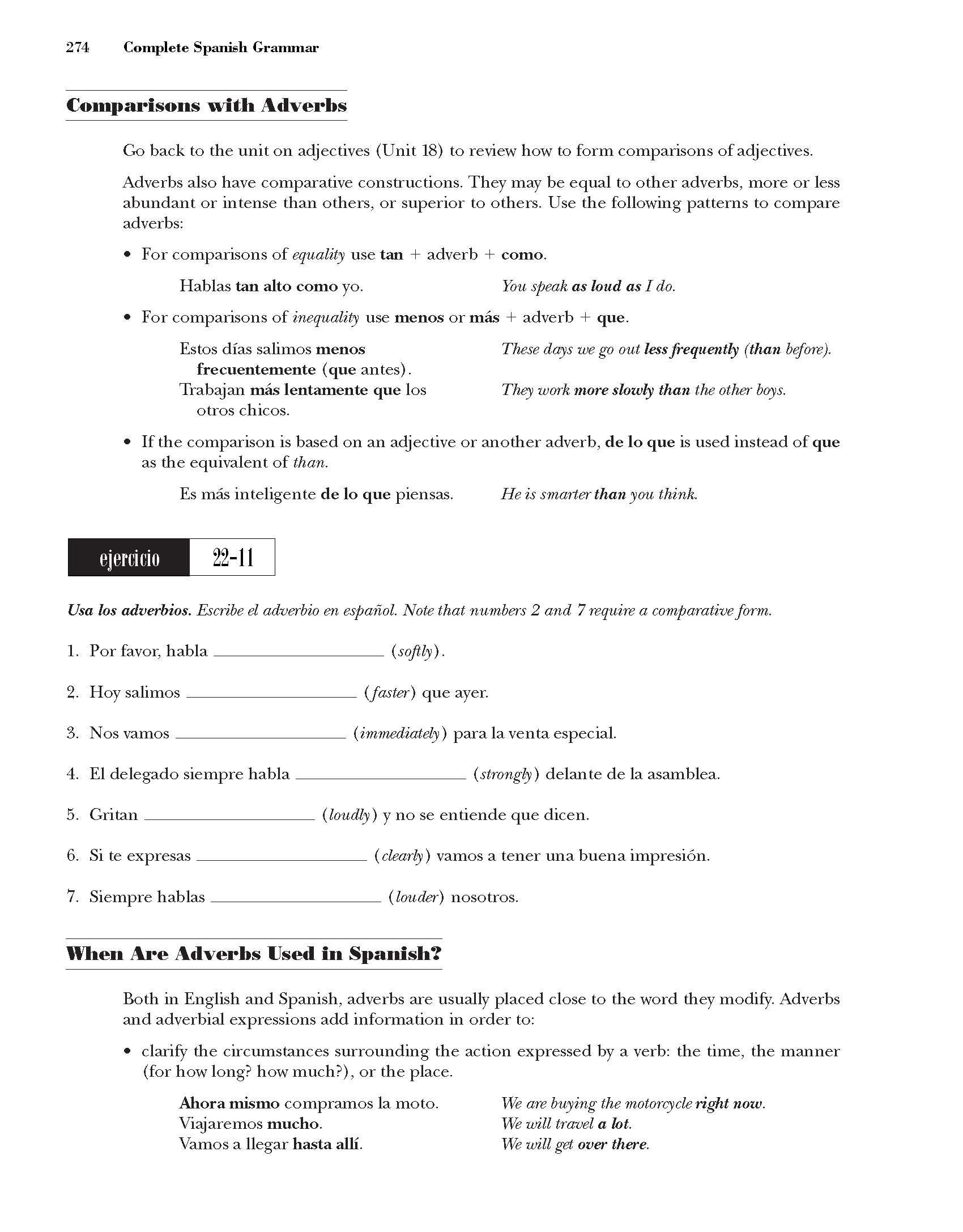CSG285

274 Complete Spanish Grammar
Comparisons w illi Advei1 2bs
Go back to the unit on adjectives (Unit 18) to review how to form comparisons of adjectives.
Adverbs also have comparative eonstrućtions. They may be equal to other adverbs, morę or less abundant or intense than others, or superior to others. Use the following patterns to compare adverbs:
• For comparisons of eąuality use tan + adverb + como.
Hablas tan alto como yo. You speak as loud as I do.
• For comparisons of ineąuality use menos or mas + adverb + que.
Estos dias salimos menos These days we go out less freąuently (than before).
freeuentemente (que antes).
Traba) an mas lentamente que los They work morę slowly than the other boys.
otros chicos.
• If the comparison is based on an adjective or another adverb, de lo que is used instead of que as the equivalent of than.
Es mas inteligente de lo que piensas. Heis smarter than you think.
22-11
ejercicio
Usa los adverbios. Escribe el aduerbio en espańol. Notę that numbers 2 and 7 reąuire a comparatwe form.
1. Por favor, habla_ (sojtly ).
2. Hoy salimos_ (faster) que ayer.
3. Nos vamos_ (immediately) para la venta especial.
4. El delegado siempre habla_ (strongly) delante de la asamblea.
5. Gritan_ (loudly) y no se entiende que dicen.
6. Si te expresas
7. Siempre hablas
(clearly) vamos a tener una buena impresión. _ (louder) nosotros.
Wlieii Are Adverbs Used in Spanish?
Both in English and Spanish, adverbs are usually placed close to the word they modify. Adverbs and adverbial expressions add information in order to:
clarify the circumstances surrounding the action expressed by a verb: the time, the manner (for how long? how much?), or the place.
Aliora mismo compramos la moto. We are buying the motorcycle right now.
Yiajaremos mucho. We will travel a lot.
Yamos a llegar hasta alli. We will get over there.
Wyszukiwarka
Podobne podstrony:
CSG031 20 Complete Spanish Grammar 2-2ejercicio lQue hacen estas personas? Choose the infinitive tha
CSG055 44 Complete Spanish Grammar 6. So many commercials! She paid to see a movie
CSG187 176 Complete Spanish Grammar Guarden los libros ya. Pu t the books away imm
CSG293 282 Complete Spanish Grammarejercicio l Que clase de relación existe entre los elementos de l
więcej podobnych podstron